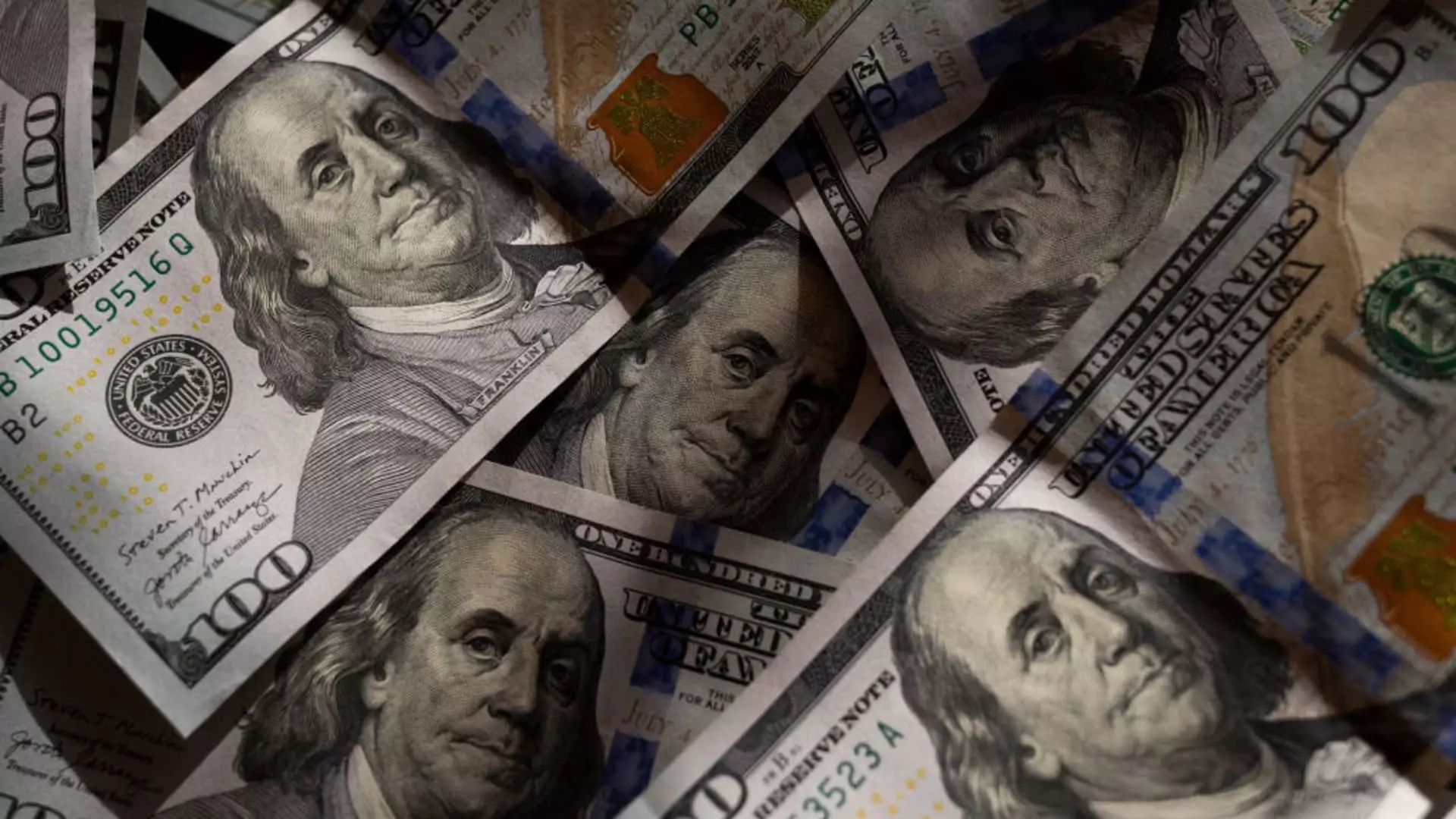The world is witnessing a dramatic depreciation of the U.S. dollar, radiating both unease and relief among global financial institutions. As recent trends indicate, the dollar index has plummeted by over 9% this year, sparking apprehensions among economists and investors alike regarding the implications of such a decline. The question on everyone’s lips is: what happens when the bedrock of international trade starts to crumble? The revelation that 61% of participants in Bank of America’s latest Global Fund Manager Survey foresee further declines in the dollar’s value emphasizes the unprecedented crisis of confidence emerging among investment circles.
This volatility is troubling and fosters an environment ripe for speculation. It also raises alarms about potential inflationary pressures stemming from higher import prices as the dollar continues to lose its value. The notifications of an impending “flight to safety” from the dollar and U.S. Treasurys signify not just a market reaction, but a deep-seated concern that ripples through the global economy, showcasing how fragile the interconnected fabric of our financial systems is.
The Global Ripple Effect
The declining dollar has not only sent shockwaves through U.S. markets but has also catalyzed a wave of appreciation among several foreign currencies. Notably, traditional safe havens like the Japanese yen and the Swiss franc have risen sharply against the greenback—by 10% and 11% respectively. Other currencies have benefited from this downturn too; the Polish zloty has surged by over 9%, and the Russian rouble has astonishingly appreciated by approximately 22%. The narrative seems clear: as the world’s dominant currency falters, other economies seize the opportunity to promote their own financial systems.
However, it is crucial to recognize that this seemingly beneficial shift for many nations comes with caveats. Emerging markets such as Vietnam and Indonesia have seen their currencies spiral downwards to historic lows against the dollar. This divergence underlines a critical observation: the economic realities of nations vary widely, and while some bask in the dollar’s decline, others suffer. The precarious balancing act of devaluation becomes apparent as currency adjustments can lead to further financial instability, especially in developing economies.
The Role of Central Banks
It’s interesting to note that, despite the weakening dollar, central banks across the globe are treading cautiously. A weakened dollar provides some relief by lowering real debt burdens in countries that have significant dollar-denominated debt. Central banks might be feeling some pressure to cut interest rates in light of rising inflation, but the fear of a currency war looms large.
Adam Button from ForexLive has suggested that most central banks would welcome a 10%-20% decline in the dollar, offering them space to implement more aggressive monetary policy. However, the fact remains that these decisions are hardly straightforward. The complexities of economic interdependence mean that while a strengthened local currency can provide short-term relief, it may jeopardize long-term export competitiveness, particularly amid increasing U.S. tariffs.
The European Central Bank has already made moves—cutting rates to nurture growth in the face of declining inflation—but other central banks remain hesitant to adopt similar policies. The intricate interplay between inflation, currency valuation, and geopolitical tensions complicates the decision-making landscape significantly.
The Emerging Risks of Devaluation
As nations grapple with their economic strategies in response to these unprecedented conditions, it becomes evident that currency devaluation is fraught with peril. Emerging market economies, particularly those with high inflation and burgeoning debts, face daunting choices—devaluing their currencies might seem like a remedy, but it has the potential to exacerbate capital outflows and stoke inflation further. For instance, Indonesia’s central bank may shy away from aggressive rate cuts due to its currency’s instability.
The precarious situation is compounded by the specter of retaliation from the U.S. administration in response to perceived currency manipulation, a prospect that could trigger tumultuous trade wars. A cautious approach is necessary; central banks must walk a tightrope that balances economic growth against the backdrop of international trade dynamics.
In essence, while the dollar’s decline offers immediate advantages for some, it also engenders a labyrinth of complications for many others. Countries with robust reserves and low foreign debt might find themselves better positioned to maneuver, but for the vast majority, the path forward is laden with uncertainty and risk.
As the global economy braces itself for what may come next, the interplay of currency values and political machinations serves as a potent reminder of just how inextricably linked our financial futures are. There is a growing need for a cooperative approach that transcends self-interest to foster a stable economic environment, one that preserves not just national interests but the integrity of the global financial system as a whole.

